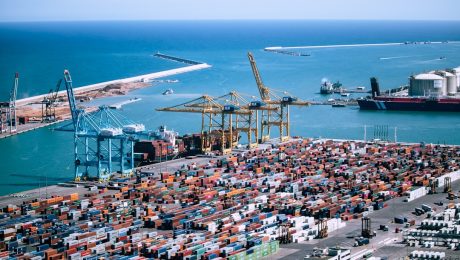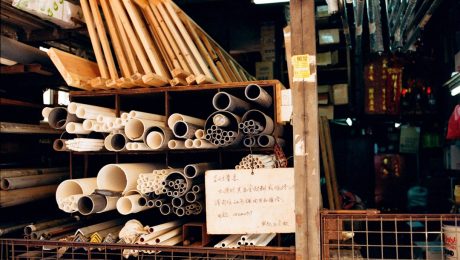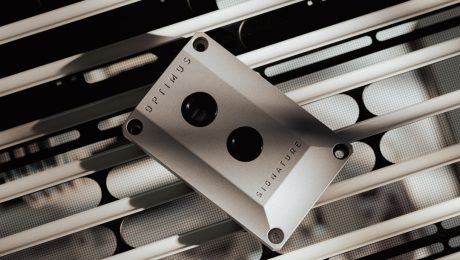body {
font-family: sans-serif;
line-height: 1.6;
}
h1, h2, h3 {
color: #333;
}
The humble square. A shape so simple, yet so profoundly significant across mathematics, art, architecture, and even culture. This seemingly basic geometric form holds a wealth of properties and applications that are far-reaching and surprisingly complex. Join us as we delve into the multifaceted world of the square.
Defining the Square: Properties and Characteristics
A square, in its purest geometric definition, is a quadrilateral – a polygon with four sides – possessing four specific and crucial characteristics: All four sides are equal in length; all four interior angles are right angles (90 degrees); opposite sides are parallel; and it possesses two diagonals of equal length that bisect each other at a right angle. These properties distinguish it from other quadrilaterals like rectangles, rhombuses, and parallelograms, each of which share some but not all of these characteristics. The square’s inherent symmetry is a key feature contributing to its elegance and practicality.
Calculating Area and Perimeter: Practical Applications of Square Geometry
The simplicity of the square’s geometry makes calculating its area and perimeter straightforward. The area of a square is found by squaring the length of one side (side * side = area). For example, a square with sides of 5cm has an area of 25cm². The perimeter, the total length of all four sides, is calculated by multiplying the length of one side by four (4 * side = perimeter). The same 5cm square has a perimeter of 20cm. These simple formulas have countless practical applications, from calculating the area of a floor to determining the amount of fencing needed for a garden. Understanding these calculations is fundamental in various fields, including construction, engineering, and design.
Squares in Art and Architecture: A Symbol of Stability and Harmony
The square’s inherent symmetry and stability have made it a favored shape in art and architecture for centuries. From the perfectly proportioned squares found in ancient Greek temples to the modern minimalist designs incorporating square elements, the shape conveys a sense of order, balance, and harmony. The visual impact of a square is often used to create a sense of solidity and permanence. Consider the iconic square windows of many traditional buildings or the use of square patterns in textiles and mosaics. The square’s presence often suggests strength, reliability, and even spiritual significance in different cultural contexts.
Beyond Geometry: The Cultural and Symbolic Significance of the Square
The square’s symbolic meaning extends far beyond its geometric properties. In many cultures, the square represents earthliness, stability, and the four cardinal directions. It can symbolize the material world, as opposed to the circle’s representation of the spiritual or celestial. In some traditions, the square’s four sides are associated with the four elements (earth, air, fire, water) or the four seasons. This rich symbolic language has been employed throughout history in religious iconography, rituals, and mythology, adding layers of meaning to the simple geometric form.
Squares in Modern Applications: From Technology to Everyday Life
The square’s influence extends into the modern world through various technological and everyday applications. The pixels on your computer screen are squares, forming the basis of digital images and displays. Square tiles are commonly used in flooring and wall coverings. Many everyday objects, from packaging to building blocks, incorporate square shapes for their practicality and ease of manufacturing. Even in advanced technology, the square’s fundamental geometric properties play a crucial role in algorithms and data structures, demonstrating its enduring relevance in the digital age. The square’s versatility and simplicity continue to make it a cornerstone of both design and functionality.
In conclusion, the square, while appearing simple at first glance, reveals a depth of meaning and application that spans centuries and disciplines. From its fundamental geometric properties to its rich symbolic significance and practical uses, the square remains a powerful and enduring symbol in our world.
SEO-Friendly Tags:
- Square Geometry
- Square Area and Perimeter
- Square Symbolism
- Applications of Squares
- Square in Art and Architecture
International trade offers immense opportunities for growth and profitability, but it also presents a unique set of challenges. Navigating the complexities of global markets requires a robust risk management strategy. This comprehensive guide will explore the key risks involved in international trade and provide actionable strategies for mitigation.
Political and Economic Risk in International Trade
Political and economic instability in your trading partner’s country can significantly impact your business. Political risks include government changes, trade wars, sanctions, and even civil unrest. These can lead to delays, contract breaches, asset seizure, and ultimately, financial losses. Economic risks encompass currency fluctuations, inflation, and changes in import/export regulations. Effective risk management requires thorough due diligence, including researching the political and economic climate of your trading partner, monitoring news and political developments, and potentially securing political risk insurance.
Logistical Challenges and Supply Chain Disruptions
The logistical complexities of international trade are substantial. Shipping delays, port congestion, customs clearance issues, and even natural disasters can disrupt your supply chain, leading to increased costs and missed deadlines. Effective risk management in this area involves diversifying your supply chain, selecting reliable shipping partners, utilizing advanced tracking technologies, and building buffer time into your schedules. Furthermore, understanding and complying with international trade regulations and documentation requirements is crucial to avoid delays and penalties.
Financial Risks and Payment Security
Financial risks in international trade are considerable. These include currency exchange rate fluctuations, payment delays, and the risk of non-payment from your buyer. Mitigation strategies include utilizing letters of credit (LCs) to secure payments, hedging against currency fluctuations, and conducting thorough credit checks on your buyers. Choosing appropriate payment terms, such as advance payment, documentary collections, or open account, based on your risk assessment and relationship with the buyer is vital. Furthermore, engaging a factoring company can help mitigate the risk of non-payment.
Legal and Regulatory Compliance in International Trade
Navigating the legal and regulatory landscape of international trade can be daunting. Each country has its own unique set of laws and regulations governing imports and exports, including tariffs, quotas, and labeling requirements. Non-compliance can lead to significant penalties, including fines and legal action. Effective risk management in this area requires engaging legal experts specializing in international trade law, staying updated on changes in regulations, and ensuring all documentation is accurate and compliant. This includes understanding and adhering to international trade agreements like the WTO agreements.
Managing Counterparty Risk and Building Strong Relationships
Counterparty risk refers to the risk that your trading partner will fail to fulfill its contractual obligations. This risk can be mitigated by conducting thorough due diligence on potential partners, establishing clear contracts with well-defined terms and conditions, and building strong, long-term relationships. Open communication, trust, and mutual respect are essential for navigating the challenges of international trade. Regularly reviewing performance and maintaining open channels of communication can help identify and address potential problems early on. Building a network of reliable partners can also provide support and mitigate risks.
Successfully navigating the world of international trade requires proactive and comprehensive risk management. By understanding and addressing these key areas, businesses can significantly reduce their exposure to potential losses and maximize their chances of success in the global marketplace. Remember that a well-defined risk management strategy is an ongoing process that requires continuous monitoring, adaptation, and improvement.
SEO-Friendly Tags:
- International Trade Risk Management
- Global Trade Risks
- Supply Chain Risk Management
- International Business Risk
- Export Import Risk
Brightwire is a powerful and versatile open-source machine learning framework written in C#. It offers a comprehensive suite of tools for building and training neural networks, from simple perceptrons to complex deep learning architectures. This guide delves into the key features that make Brightwire a compelling choice for developers working on a wide range of AI projects.
1. Building Blocks: Understanding Brightwire’s Core Components
At its heart, Brightwire comprises several fundamental components working in concert. These include:
- Neural Networks: Brightwire provides a flexible architecture for creating various neural network types, such as feedforward networks, recurrent networks (LSTMs, GRUs), convolutional neural networks (CNNs), and more. You can easily define the network topology, layer types, and activation functions.
- Layers: The building blocks of neural networks. Brightwire offers a wide range of layers, including fully connected layers, convolutional layers, pooling layers, recurrent layers, and more. Each layer has specific properties that can be customized to suit the task.
- Activation Functions: These functions introduce non-linearity into the network, enabling it to learn complex patterns. Brightwire supports a broad spectrum of activation functions, including sigmoid, ReLU, tanh, and many others.
- Backpropagation: The core algorithm for training neural networks. Brightwire efficiently implements backpropagation, allowing for the adjustment of network weights based on the error signal.
- Optimizers: Algorithms used to update network weights during training. Brightwire supports various optimizers, such as stochastic gradient descent (SGD), Adam, RMSprop, and more, each with its strengths and weaknesses.
2. Data Handling and Preprocessing: Streamlining Your Workflow
Efficient data handling is crucial for successful machine learning. Brightwire provides tools to simplify data preprocessing and integration:
- Data Loading: Brightwire supports loading data from various sources, including CSV files, databases, and custom data streams. It offers flexible ways to handle different data formats and structures.
- Data Normalization: Essential for improving model performance. Brightwire provides functions for normalizing data to a specific range or distribution, preventing features with larger values from dominating the learning process.
- Data Augmentation: Increasing the size and diversity of your training data can significantly improve generalization. Brightwire allows for data augmentation techniques, such as image rotation, cropping, and flipping, to enhance model robustness.
- Data Splitting: Dividing your data into training, validation, and testing sets is vital for evaluating model performance and preventing overfitting. Brightwire provides functions for easily splitting your data into these sets.
3. Training and Optimization: Fine-Tuning Your Models
Brightwire offers a range of features to optimize the training process and improve model performance:
- Training Algorithms: Beyond basic backpropagation, Brightwire supports advanced training techniques like mini-batch gradient descent and various optimization algorithms.
- Early Stopping: Preventing overfitting by monitoring the validation error and stopping training when it starts to increase. Brightwire provides built-in mechanisms for early stopping.
- Regularization Techniques: Methods to reduce overfitting, such as L1 and L2 regularization, are integrated into Brightwire’s training process.
- Learning Rate Scheduling: Dynamically adjusting the learning rate during training can improve convergence and prevent oscillations. Brightwire allows for various learning rate scheduling strategies.
- Monitoring and Logging: Tracking training progress is essential. Brightwire provides tools to monitor key metrics, such as loss, accuracy, and training time, and log them for analysis.
4. Deployment and Integration: Bringing Your Models to Life
Brightwire focuses on ease of deployment and integration with other systems:
- Serialization: Saving and loading trained models is straightforward, allowing for easy reuse and deployment.
- Inference Engine: Brightwire provides an efficient inference engine for making predictions with trained models in real-time applications.
- Integration with Other Libraries: Brightwire can be integrated with other C# libraries and frameworks, allowing for seamless integration into existing projects.
- Customizability: Brightwire’s modular design allows for extensive customization and extension to meet specific project requirements.
5. Advanced Features and Capabilities: Exploring the Cutting Edge
Brightwire also offers more advanced features for experienced users:
- GPU Acceleration: Leveraging the power of GPUs for faster training, particularly important for larger models and datasets.
- Distributed Training: Training models across multiple machines for even faster processing of massive datasets.
- Custom Layer Implementations: The ability to create and integrate custom layers expands the framework’s capabilities significantly.
- Support for various data types: Handles various data types beyond simple numerical data, including images and text.
Brightwire’s comprehensive feature set makes it a powerful and flexible tool for machine learning development. Its ease of use, coupled with its advanced capabilities, makes it an excellent choice for both beginners and experienced developers seeking a robust and efficient framework for their AI projects.
Tags: Brightwire, Machine Learning, Neural Networks, Deep Learning, C# Framework
Steel bridges, symbols of engineering prowess and architectural elegance, grace landscapes worldwide. Their design, however, is a complex undertaking requiring a deep understanding of structural mechanics, material science, and construction techniques. This comprehensive guide delves into the key aspects of designing these magnificent structures.
1. Initial Concepts and Load Analysis: Laying the Foundation
The design process begins with a thorough understanding of the project’s requirements. This involves defining the bridge’s purpose (e.g., carrying vehicular traffic, pedestrian walkways, or railway lines), determining its location and the surrounding environment (considering seismic activity, soil conditions, and potential environmental impacts), and establishing the desired lifespan. Crucially, a comprehensive load analysis is performed. This involves identifying all potential loads the bridge will experience, including:
- Dead Loads: The weight of the bridge itself, including the deck, beams, girders, and other structural elements.
- Live Loads: Loads imposed by vehicles, pedestrians, and other moving elements. Design codes specify minimum live load requirements based on the intended use of the bridge.
- Environmental Loads: Loads due to wind, snow, ice, and temperature variations. These loads can significantly impact the bridge’s stability and structural integrity.
- Seismic Loads: In seismically active regions, earthquake loads are crucial considerations, requiring specialized design techniques to ensure the bridge can withstand ground shaking.
Accurate load analysis is paramount; underestimation can lead to catastrophic failures, while overestimation can result in unnecessary cost increases.
2. Material Selection and Structural Design: Choosing the Right Steel
Steel’s high strength-to-weight ratio, durability, and versatility make it a preferred material for bridge construction. However, selecting the appropriate steel grade is critical. Factors to consider include:
- Yield Strength: The stress at which the steel begins to deform permanently.
- Tensile Strength: The maximum stress the steel can withstand before fracturing.
- Ductility: The steel’s ability to deform plastically before failure, providing a degree of warning before collapse.
- Weldability: The ease with which the steel can be welded, a crucial aspect of steel bridge construction.
Different steel grades are available, each optimized for specific applications. The structural design itself involves selecting appropriate structural elements (e.g., beams, girders, trusses, arches) and their arrangement to effectively transfer loads from the deck to the supports. Advanced techniques like finite element analysis (FEA) are employed to simulate the bridge’s behavior under various load conditions, ensuring structural integrity and optimizing the design.
3. Finite Element Analysis (FEA) and Optimization: Refining the Design
FEA is an indispensable tool in modern steel bridge design. It involves dividing the bridge into numerous smaller elements and using computational methods to analyze the stress and strain distribution within each element under various load scenarios. This allows engineers to identify areas of high stress concentration and refine the design to optimize structural performance and minimize material usage. Optimization techniques, often integrated with FEA, further enhance the design by exploring different design parameters (e.g., member sizes, material properties, geometry) to achieve the most efficient and cost-effective solution while meeting all performance requirements.
4. Detailing and Construction Considerations: From Design to Reality
Detailed drawings are essential for the successful construction of the bridge. These drawings specify the dimensions, connections, and fabrication details of all structural elements. Careful consideration must be given to:
- Connections: The design of connections between different structural members is crucial for ensuring the overall stability and strength of the bridge. Welded connections are common, but bolted connections are also used, depending on the specific design requirements.
- Corrosion Protection: Steel is susceptible to corrosion, necessitating protective measures such as painting, galvanizing, or other corrosion-resistant coatings.
- Fabrication and Erection: The design must consider the practical aspects of fabrication and erection, ensuring that the bridge can be efficiently constructed without compromising safety or quality.
- Accessibility and Maintenance: The design should incorporate features that facilitate future maintenance and inspection, ensuring the long-term serviceability of the bridge.
5. Codes, Standards, and Regulations: Ensuring Safety and Compliance
Steel bridge design is governed by various codes, standards, and regulations that ensure the safety and reliability of the structure. These codes specify minimum design requirements for loads, materials, and construction methods. Adherence to these codes is crucial for obtaining necessary permits and approvals. Examples of relevant codes include AASHTO (American Association of State Highway and Transportation Officials) and Eurocodes, depending on the location of the project. Regular inspections and maintenance are also essential to ensure that the bridge continues to meet safety standards throughout its lifespan.
Designing steel bridges is a multifaceted endeavor that blends scientific principles, engineering expertise, and artistic vision. By carefully considering the factors outlined above, engineers can create structures that are both aesthetically pleasing and structurally sound, providing safe and efficient transportation for generations to come.
SEO Tags:
- Steel Bridge Design
- Bridge Engineering
- Structural Engineering
- Steel Structures
- Bridge Construction
In today’s competitive landscape, customer satisfaction isn’t just a desirable outcome; it’s the cornerstone of sustainable business growth. Happy customers become loyal advocates, driving referrals and positive word-of-mouth marketing. This blog post delves into effective customer satisfaction initiatives that can transform your business and foster lasting customer relationships.
1. Proactive Customer Listening: The Foundation of Satisfaction
Before you can improve customer satisfaction, you need to understand what your customers are experiencing. Proactive customer listening goes beyond simply reacting to complaints. It involves actively seeking out feedback through various channels. This includes:
- Regular surveys: Implement short, targeted surveys at different stages of the customer journey (post-purchase, after support interaction, etc.). Use a mix of quantitative (rating scales) and qualitative (open-ended questions) data to gain a holistic understanding.
- Social media monitoring: Track brand mentions and conversations on social media platforms. Identify both positive and negative feedback to understand customer sentiment and address concerns promptly.
- Customer reviews and feedback platforms: Actively monitor review sites like Google My Business, Yelp, and industry-specific platforms. Respond to reviews, both positive and negative, showing customers you value their feedback.
- Focus groups and interviews: Conduct in-depth interviews or focus groups to gain deeper insights into customer needs, pain points, and expectations.
- Analyzing customer support interactions: Examine customer service calls, emails, and chat transcripts to identify recurring issues and areas for improvement.
By actively listening to your customers, you gain invaluable insights into their experiences, allowing you to proactively address potential issues before they escalate into major problems.
2. Empowering Your Customer Service Team: The Frontline of Satisfaction
Your customer service team is the direct link to your customers’ satisfaction. Empowering them to effectively resolve issues and provide exceptional service is crucial. This involves:
- Providing comprehensive training: Equip your team with the knowledge and skills they need to handle various customer inquiries and complaints effectively. This includes product knowledge, problem-solving techniques, and communication skills.
- Investing in the right tools and technology: Provide your team with the necessary tools to efficiently manage customer interactions, such as CRM software, help desk systems, and knowledge bases.
- Creating a supportive work environment: Foster a positive and supportive work environment where employees feel valued and empowered. This leads to increased job satisfaction and improved customer service.
- Implementing clear escalation procedures: Establish clear procedures for escalating complex issues to more experienced team members or management, ensuring prompt and effective resolution.
- Measuring and rewarding performance: Track key performance indicators (KPIs) such as customer satisfaction scores (CSAT), resolution time, and first-contact resolution rate. Reward employees for excellent performance to incentivize exceptional customer service.
A well-trained, empowered, and motivated customer service team is essential for building strong customer relationships and driving satisfaction.
3. Personalization: Making Customers Feel Valued
Personalization is key to making customers feel valued and understood. It’s about tailoring your interactions and offerings to meet individual customer needs and preferences. This can be achieved through:
- Personalized email marketing: Segment your email lists based on customer demographics, purchase history, and preferences. Send targeted emails with relevant product recommendations and offers.
- Personalized website experiences: Use website personalization tools to customize website content and recommendations based on individual customer profiles.
- Personalized product recommendations: Leverage data to suggest products and services that are relevant to individual customer interests and needs.
- Proactive customer support: Anticipate customer needs and proactively offer assistance. For example, send follow-up emails after a purchase to check on satisfaction or offer troubleshooting assistance.
- Personalized loyalty programs: Create loyalty programs that reward customers based on their individual spending habits and preferences.
By personalizing your interactions, you show customers that you understand their needs and value their business, fostering stronger relationships and increased loyalty.
4. Continuous Improvement: The Ongoing Pursuit of Excellence
Customer satisfaction is an ongoing journey, not a destination. Continuous improvement requires a commitment to regularly evaluating your processes and making adjustments based on customer feedback and performance data. This involves:
- Regularly analyzing customer feedback: Regularly review customer surveys, reviews, and social media mentions to identify areas for improvement.
- Tracking key performance indicators (KPIs): Monitor KPIs such as CSAT, Net Promoter Score (NPS), and customer churn rate to track progress and identify areas needing attention.
- Implementing feedback loops: Establish clear channels for customers to provide feedback and ensure that feedback is actively reviewed and acted upon.
- A/B testing different approaches: Experiment with different approaches to customer service, marketing, and product development to identify what works best for your customers.
- Investing in employee training and development: Continuously invest in training and development to ensure that your team has the skills and knowledge to provide exceptional customer service.
A culture of continuous improvement ensures that you’re always striving to enhance the customer experience and exceed expectations.
5. Building a Customer-Centric Culture: A Holistic Approach
Ultimately, achieving high levels of customer satisfaction requires a fundamental shift towards a customer-centric culture. This means embedding customer focus into every aspect of your business, from product development to marketing and customer service. This involves:
- Clearly defining your customer personas: Develop detailed profiles of your ideal customers to better understand their needs and preferences.
- Establishing clear customer service goals: Set specific, measurable, achievable, relevant, and time-bound (SMART) goals for your customer service team.
- Empowering employees to resolve customer issues: Give employees the authority to resolve customer issues quickly and efficiently.
- Creating a culture of empathy and understanding: Encourage employees to empathize with customers and understand their perspectives.
- Celebrating successes and learning from failures: Regularly recognize and reward employees for excellent customer service and learn from any mistakes.
By fostering a customer-centric culture, you create a sustainable environment where customer satisfaction is not just a priority, but a core value that permeates every aspect of your business.
By implementing these customer satisfaction initiatives, your business will not only see increased customer loyalty but also improved brand reputation, positive word-of-mouth marketing, and ultimately, enhanced profitability.
Tags: Customer Satisfaction, Customer Experience, Customer Service, Customer Loyalty, Business Growth
In today’s competitive landscape, delivering high-quality products consistently is paramount. The pursuit of zero-defect production, while seemingly unattainable, represents a powerful aspiration driving continuous improvement and operational excellence. This blog post delves into the intricacies of achieving this ambitious goal, exploring the strategies, challenges, and benefits along the way.
Understanding the Zero-Defect Philosophy
The zero-defect philosophy isn’t about achieving absolute perfection, where every single unit produced is flawless. Instead, it’s a mindset, a commitment to continuous improvement aimed at minimizing defects to an insignificant level. It’s about striving for excellence, fostering a culture of quality, and proactively identifying and addressing potential problems before they become costly defects. This shift in perspective from reactive problem-solving to proactive quality management is crucial for success. It requires a complete buy-in from all levels of the organization, from the shop floor to the executive suite. The focus shifts from simply meeting specifications to exceeding expectations and delivering products that consistently delight customers.
Implementing Robust Quality Control Systems
A robust quality control system is the backbone of any zero-defect initiative. This involves implementing a multi-layered approach encompassing several key elements. Statistical Process Control (SPC) provides real-time monitoring of production processes, allowing for early detection of deviations and adjustments to prevent defects. Total Quality Management (TQM) promotes a company-wide commitment to quality, empowering employees at all levels to identify and address quality issues. Six Sigma methodologies, with their emphasis on data-driven decision-making and process optimization, can significantly reduce variation and defect rates. Regularly scheduled audits, both internal and external, provide objective assessments of the effectiveness of implemented quality systems. Furthermore, investing in advanced technologies like automated inspection systems can significantly enhance the speed and accuracy of quality checks, minimizing human error.
The Role of Employee Empowerment and Training
Achieving zero-defect production isn’t solely the responsibility of a dedicated quality control team. It requires the active participation and commitment of every employee. Empowering employees to identify and address quality issues is crucial. This involves providing them with the necessary training, tools, and authority to make decisions that impact quality. Regular training programs focused on quality control techniques, problem-solving methodologies, and process improvement initiatives should be implemented. Open communication channels allow employees to voice concerns and suggestions without fear of retribution, fostering a culture of continuous improvement. Employee feedback mechanisms, such as suggestion boxes or regular feedback sessions, provide valuable insights into potential areas for improvement. Recognizing and rewarding employees who contribute to improving quality further reinforces the importance of the zero-defect philosophy.
Overcoming Challenges in Pursuit of Zero Defects
The journey to zero-defect production is not without its challenges. Cost is a significant hurdle, as implementing robust quality control systems and training programs requires significant investment. Resistance to change from employees accustomed to traditional methods can also hinder progress. Achieving perfect consistency across all processes and materials can be difficult, especially in complex manufacturing environments. Measuring and tracking progress towards the zero-defect goal requires accurate and reliable data collection systems. Addressing these challenges requires a phased approach, prioritizing improvements based on their impact and feasibility, and consistently communicating the benefits of the zero-defect initiative to all stakeholders. A robust change management strategy is crucial to navigate resistance and ensure smooth implementation.
The Benefits of a Zero-Defect Approach
The benefits of striving for zero-defect production extend far beyond simply reducing defects. Increased customer satisfaction is a direct result of consistently delivering high-quality products. Reduced waste minimizes material, time, and labor costs associated with rework, scrap, and warranty claims. Enhanced brand reputation builds trust and loyalty among customers. Improved efficiency streamlines production processes, leading to increased productivity and profitability. Increased competitiveness allows businesses to stand out in a crowded marketplace. The long-term investment in achieving zero-defect goals yields significant returns in terms of operational efficiency, customer satisfaction, and bottom-line profitability.
In conclusion, while achieving true “zero defects” might be an ideal, the pursuit of this goal fosters a culture of continuous improvement and operational excellence, leading to significant benefits for any organization. By implementing robust quality control systems, empowering employees, and overcoming inherent challenges, businesses can significantly reduce defects, enhance quality, and gain a competitive edge in the marketplace.
Tags: Zero-defect manufacturing, Quality control, Six Sigma, Total Quality Management, Lean manufacturing
body {
font-family: sans-serif;
line-height: 1.6;
}
h1, h2, h3 {
color: #333;
}
h1 {
font-size: 2.5em;
}
h2 {
font-size: 2em;
}
h3 {
font-size: 1.5em;
}
The steel industry relies heavily on adherence to stringent standards to ensure the quality, safety, and reliability of its products. The American Society for Testing and Materials (ASTM) provides a crucial framework for these standards, dictating specifications for various steel grades and testing procedures. Understanding and complying with ASTM standards is paramount for steel producers seeking to maintain a competitive edge and deliver products that meet the demands of diverse applications.
Understanding ASTM Standards in Steel Production
ASTM International develops and publishes voluntary consensus standards for materials, products, systems, and services. In the steel industry, these standards cover a vast range of aspects, including chemical composition, mechanical properties (like tensile strength, yield strength, and elongation), impact resistance, hardness, and weldability. Each steel grade is typically defined by a specific ASTM designation, such as A36 (structural steel) or A572 (high-strength low-alloy steel). These designations clearly specify the required properties and testing methods, allowing for consistent quality control throughout the supply chain.
Key ASTM Standards for Common Steel Grades
Several ASTM standards are critical for different types of steel. For instance, ASTM A36 covers structural steel, outlining its minimum yield strength and tensile strength. ASTM A572 defines high-strength low-alloy steels, often used in bridges and other demanding structural applications. ASTM A672 addresses the requirements for high-strength low-alloy steel plates. Beyond structural steels, ASTM standards also cover stainless steels (e.g., ASTM A240), tool steels, and other specialized grades. The specific standard applied depends entirely on the intended use of the steel and the required properties.
The Importance of Material Testing and ASTM Compliance
Adherence to ASTM standards necessitates rigorous material testing throughout the steel production process. These tests verify that the steel meets the specified chemical composition and mechanical properties. Common tests include tensile testing (to determine yield and tensile strength), impact testing (to assess toughness), hardness testing (to measure resistance to indentation), and chemical analysis (to verify the elemental composition). These tests are not only crucial for ensuring product quality but also for demonstrating compliance with relevant regulations and industry standards. Detailed records of these tests are essential for traceability and accountability.
Consequences of Non-Compliance with ASTM Standards
Failure to comply with ASTM standards can have serious consequences. This can range from product recalls and financial losses to reputational damage and legal liabilities. Non-compliant steel may exhibit inadequate strength or other undesirable properties, leading to structural failures, safety hazards, and potentially catastrophic events. Furthermore, non-compliance can result in rejection of materials by customers, leading to significant production delays and economic losses. Therefore, maintaining strict ASTM compliance is not merely a matter of best practice; it’s a critical aspect of responsible steel production.
Ensuring ASTM Compliance in Your Steel Production Process
Implementing a robust quality management system (QMS) is crucial for ensuring consistent ASTM compliance. This involves establishing clear procedures for material selection, processing, testing, and documentation. Regular audits and internal inspections are necessary to identify and address any potential deviations from the standards. Investing in accurate and reliable testing equipment and employing skilled personnel are vital components of a successful compliance program. Regular training for personnel on ASTM standards and testing procedures is also essential to maintain proficiency and ensure consistent results. Finally, maintaining detailed records of all testing and inspection activities is critical for traceability and demonstrating compliance to external stakeholders.
By meticulously adhering to ASTM standards, steel producers can ensure the quality, safety, and reliability of their products, fostering trust with customers and maintaining a competitive advantage in the marketplace. The investment in compliance is an investment in long-term success.
Tags: ASTM, Steel Production, Quality Control, Material Testing, Compliance Standards
The steel industry is constantly evolving, driven by the demand for materials with enhanced properties to meet the challenges of modern engineering and technology. High value-added steel products represent the pinnacle of this evolution, offering superior performance characteristics compared to conventional steel grades. This in-depth exploration delves into the fascinating world of these advanced materials, examining their unique properties, diverse applications, manufacturing complexities, market dynamics, and future prospects.
Defining High Value-Added Steel: Beyond the Basics
High value-added steel isn’t simply a higher-priced steel; it’s a product engineered with specific properties tailored to demanding applications. This involves sophisticated alloying, precise manufacturing processes, and rigorous quality control. These steels often possess superior strength, corrosion resistance, formability, or other specialized characteristics unattainable in standard steel grades. The “value-added” aspect stems from the enhanced performance, leading to improved efficiency, reduced maintenance costs, and extended lifespan in various end-use applications. Examples include advanced high-strength steels (AHSS), stainless steels with enhanced corrosion resistance, and tool steels with exceptional wear resistance.
Manufacturing Processes: Precision and Innovation
Producing high value-added steel requires advanced manufacturing techniques beyond conventional steelmaking. Processes like thermomechanical control processing (TMCP) are crucial for AHSS, allowing for precise control over the microstructure and resulting in exceptional strength and ductility. Vacuum induction melting (VIM) and electroslag remelting (ESR) are employed to refine the steel composition, removing impurities and ensuring consistent quality, particularly important for specialty steels used in critical applications like aerospace and medical devices. Advanced techniques like laser welding and additive manufacturing are also being increasingly explored to create complex shapes and further enhance the properties of these steels.
Key Applications: Where High Value-Added Steel Shines
The superior properties of high value-added steel lend themselves to a wide range of demanding applications across diverse industries. In the automotive sector, AHSS plays a vital role in lightweighting vehicles, enhancing fuel efficiency and safety. The aerospace industry relies on high-temperature alloys and corrosion-resistant steels for aircraft components, ensuring structural integrity and durability. The medical industry utilizes biocompatible stainless steels for implants and surgical instruments, prioritizing biocompatibility and strength. Other key applications include energy (turbines, pipelines), construction (high-rise buildings, bridges), and consumer goods (high-performance tools, sporting equipment).
Market Trends and Future Prospects: A Growing Demand
The market for high value-added steel is experiencing significant growth, driven by increasing demand from key sectors like automotive, aerospace, and energy. The trend towards lightweighting, improved efficiency, and enhanced safety is fueling the adoption of these advanced steels. Furthermore, ongoing research and development are constantly pushing the boundaries of steel properties, leading to the emergence of even more specialized grades with enhanced performance characteristics. This includes the exploration of novel alloying elements, advanced processing techniques, and the integration of smart materials technologies.
Challenges and Opportunities: Navigating the Future
Despite the promising market outlook, the high value-added steel industry faces certain challenges. The cost of manufacturing these specialized steels is generally higher compared to conventional grades, impacting affordability. Sustainable manufacturing practices are also crucial, as the environmental impact of steel production needs to be minimized. Opportunities lie in developing more cost-effective manufacturing processes, exploring eco-friendly alloying elements, and fostering collaborations across the value chain to streamline production and enhance the overall efficiency of the industry. The future of high value-added steel hinges on overcoming these challenges while capitalizing on the growing demand for these advanced materials in a sustainable manner.
The future of high value-added steel is bright, with continuous innovation driving the development of even more advanced materials to meet the evolving needs of various industries. The ongoing research in material science, coupled with advancements in manufacturing techniques, promises to unlock even greater potential in the years to come.
SEO-Friendly Tags:
- High Value-Added Steel
- Advanced High-Strength Steel (AHSS)
- Specialty Steel
- Steel Alloys
- Steel Manufacturing Processes
In today’s world, noise pollution is a significant concern, impacting productivity, health, and overall well-being. Effective acoustic solutions are crucial for creating comfortable and functional spaces. Acoustic steel profile systems offer a robust and versatile approach to noise control, providing superior performance in a wide range of applications. This comprehensive guide explores the intricacies of these systems, delving into their design, benefits, applications, installation, and future trends.
Understanding the Design of Acoustic Steel Profile Systems
Acoustic steel profile systems are engineered structures designed to absorb, block, or deflect sound waves. Unlike traditional methods, these systems leverage the inherent strength and precision of steel profiles to create complex and effective acoustic barriers. The design often involves a combination of elements: the steel profile itself, which provides structural support and a framework for other acoustic materials; sound-absorbing materials, such as mineral wool or fiberglass, placed within the profile system to dampen sound waves; and sometimes, a facing material that provides a visually appealing finish while contributing to acoustic performance. The precise configuration of these elements is carefully determined based on the specific acoustic requirements of the project, considering factors like frequency response, sound transmission class (STC), and noise reduction coefficient (NRC).
Key Benefits of Using Acoustic Steel Profile Systems
Acoustic steel profile systems offer several advantages over traditional acoustic solutions. Their robust construction ensures durability and longevity, resisting damage and maintaining acoustic performance over extended periods. Steel’s inherent strength allows for the creation of large, uninterrupted acoustic barriers, ideal for large-scale projects like industrial facilities or auditoriums. The modular design of these systems facilitates easy installation and customization, allowing for flexibility in adapting to diverse architectural requirements. Furthermore, steel profile systems are often more cost-effective in the long run due to their durability and reduced maintenance needs. Finally, they offer superior fire resistance compared to some alternative materials, contributing to overall building safety.
Diverse Applications of Acoustic Steel Profile Systems
The versatility of acoustic steel profile systems makes them suitable for a wide range of applications across various sectors. In industrial settings, they are used to control noise from machinery, improving worker safety and productivity. In commercial buildings, these systems enhance the acoustic comfort of offices, conference rooms, and restaurants. They are also frequently employed in architectural projects to mitigate noise transmission between different areas of a building. Furthermore, acoustic steel profile systems find application in transportation infrastructure, such as railway stations and airports, reducing noise pollution in surrounding areas. The entertainment industry also benefits, utilizing these systems in recording studios, theaters, and concert halls to optimize sound quality.
Installation and Maintenance of Acoustic Steel Profile Systems
The installation process of acoustic steel profile systems typically involves several stages. First, the structural framework is erected, ensuring precise alignment and stability. Next, the sound-absorbing materials are carefully placed within the steel profiles, ensuring complete coverage and minimizing air gaps. Finally, the facing material, if applicable, is affixed, providing a finished aesthetic and potentially adding to the acoustic properties. Professional installation is crucial to guarantee optimal performance. Maintenance is generally minimal, primarily involving periodic inspections to ensure the structural integrity of the system. Any damage or wear should be addressed promptly to maintain the effectiveness of the noise control measures.
Future Trends in Acoustic Steel Profile Systems
The field of acoustic steel profile systems is constantly evolving, driven by advancements in materials science, design techniques, and manufacturing processes. We can expect to see increasing integration of sustainable and eco-friendly materials in the construction of these systems, reducing their environmental impact. Innovations in design are likely to lead to lighter, more efficient, and aesthetically pleasing systems, catering to a broader range of architectural styles. Furthermore, the use of advanced modelling and simulation techniques will allow for more precise design optimization, ensuring optimal acoustic performance tailored to specific requirements. The development of smart technologies, such as integrated sensors and acoustic monitoring systems, could further enhance the performance and management of these systems in the future.
In conclusion, acoustic steel profile systems present a powerful and versatile solution for controlling noise pollution and optimizing acoustic environments. Their durability, flexibility, and effectiveness make them an ideal choice for a variety of applications, ensuring a quieter and more productive future.
SEO Tags: Acoustic Steel Profiles, Noise Control Systems, Sound Absorption, Steel Profile Acoustics, Acoustic Design










